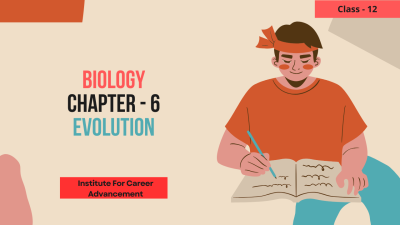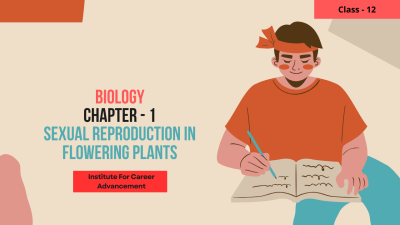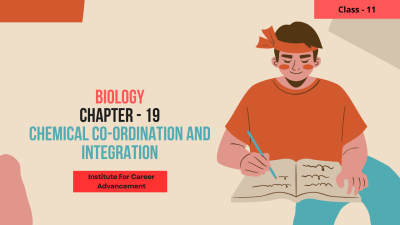Courses


 Compare
Compare
In Class 12 Human Health and Diseases, you'll delve into the factors that influence human health and the mechanisms behind various diseases. Here's a quick overview: Health Definition: You'll explore the World Health Organization's definition of health, which goes beyond the absence of disease and emphasizes physical, mental, and social well-being. Types of Diseases: The course will categorize diseases based on their cause: Infectious Diseases: Caused by pathogens like bacteria, viruses, fungi, or parasites, and can be transmitted from one person to another (e.g., common cold, malaria). Non-communicable Diseases (NCDs): Not transmitted from person to person and often develop over time due to lifestyle factors, genetics, or environmental influences (e.g., diabetes, heart disease, cancer). The Immune System: This is your body's defense system, and you'll learn about its different components and how they work together to fight off pathogens. Disease Prevention and Control: The course emphasizes strategies to prevent the spread of infectious diseases (vaccination, hygiene) and methods for managing NCDs (healthy diet, exercise). দ্বাদশ শ্রেণীতে মানব স্বাস্থ্য ও রোগে, আপনি মানব স্বাস্থ্যকে প্রভাবিত করে এমন কারণগুলি এবং বিভিন্ন রোগের পিছনের প্রক্রিয়াগুলি অনুসন্ধান করবেন। এখানে একটি দ্রুত ওভারভিউঃ স্বাস্থ্যের সংজ্ঞাঃ আপনি বিশ্ব স্বাস্থ্য সংস্থার স্বাস্থ্যের সংজ্ঞাটি অন্বেষণ করবেন, যা রোগের অনুপস্থিতির বাইরে যায় এবং শারীরিক, মানসিক এবং সামাজিক সুস্থতার উপর জোর দেয়। রোগের প্রকারঃ কোর্সটি তাদের কারণের উপর ভিত্তি করে রোগগুলিকে শ্রেণীবদ্ধ করবেঃ সংক্রামক রোগঃ ব্যাকটেরিয়া, ভাইরাস, ছত্রাক বা পরজীবীর মতো প্যাথোজেন দ্বারা সৃষ্ট এবং এক ব্যক্তি থেকে অন্য ব্যক্তিতে সংক্রমণ হতে পারে। (e.g., common cold, malaria). অসংক্রামক রোগ (এন. সি. ডি) এক ব্যক্তি থেকে অন্য ব্যক্তিতে সংক্রামিত হয় না এবং প্রায়শই জীবনযাত্রার কারণ, জেনেটিক্স বা পরিবেশগত প্রভাবের কারণে সময়ের সাথে সাথে বিকশিত হয় (e.g., diabetes, heart disease, cancer). ইমিউন সিস্টেমঃ এটি আপনার শরীরের প্রতিরক্ষা ব্যবস্থা, এবং আপনি এর বিভিন্ন উপাদান এবং কীভাবে তারা প্যাথোজেনগুলির বিরুদ্ধে লড়াই করতে একসাথে কাজ করে সে সম্পর্কে শিখবেন। রোগ প্রতিরোধ ও নিয়ন্ত্রণঃ কোর্সটি সংক্রামক রোগের বিস্তার (টিকা, স্বাস্থ্যকর) প্রতিরোধের কৌশল এবং এনসিডি পরিচালনার পদ্ধতিগুলির উপর জোর দেয়। (healthy diet, exercise).
0 Lessons
Hours

 Compare
Compare
Evolution in Class 12 Biology refers to the gradual change in populations of living organisms over time. It's the idea that all life on Earth shares a common ancestor and has diversified through a process driven by: Genetic Variation: Individual organisms within a population have slight variations in their genes due to mutations. These variations can be passed on to offspring. Natural Selection: Organisms with traits better suited to their environment are more likely to survive and reproduce, passing on those favorable traits to their offspring. Over generations, this leads to a gradual change in the population towards traits that enhance survival and reproduction in that specific environment. This course explores the mechanisms and evidence supporting evolution, including: The Theory of Natural Selection by Charles Darwin and Alfred Russel Wallace Fossil Record - Evidence of past life forms preserved in rock Comparative Anatomy & Embryology - Similarities in body structures and development across species Biogeography - Distribution of life forms across the globe By understanding evolution, you gain insight into: The diversity of life on Earth Adaptation of organisms to their environment The process of speciation (formation of new species) Extinction of species দ্বাদশ শ্রেণীতে বিবর্তন জীববিজ্ঞান বলতে সময়ের সঙ্গে সঙ্গে জীবের জনসংখ্যার ক্রমবর্ধমান পরিবর্তনকে বোঝায়। এই ধারণাটি হল যে পৃথিবীর সমস্ত জীবন একটি সাধারণ পূর্বপুরুষকে ভাগ করে নিয়েছে এবং এর দ্বারা চালিত একটি প্রক্রিয়ার মাধ্যমে বৈচিত্র্যময় হয়েছেঃ জিনগত বৈচিত্র্যঃ একটি জনসংখ্যার মধ্যে পৃথক জীবের মিউটেশনের কারণে তাদের জিনে সামান্য বৈচিত্র্য থাকে। এই বৈচিত্রগুলি বংশধরদের মধ্যে প্রেরণ করা যেতে পারে। প্রাকৃতিক নির্বাচনঃ যেসব জীবের বৈশিষ্ট্য তাদের পরিবেশের জন্য আরও উপযুক্ত, তাদের বেঁচে থাকার এবং পুনরুত্পাদন করার সম্ভাবনা বেশি থাকে, তাদের বংশধরদের কাছে সেই অনুকূল বৈশিষ্ট্যগুলি প্রেরণ করে। প্রজন্মের পর প্রজন্ম ধরে, এটি জনসংখ্যার বৈশিষ্ট্যগুলির প্রতি ধীরে ধীরে পরিবর্তনের দিকে পরিচালিত করে যা সেই নির্দিষ্ট পরিবেশে বেঁচে থাকা এবং প্রজননকে বাড়িয়ে তোলে। এই কোর্সটি বিবর্তনকে সমর্থনকারী প্রক্রিয়া এবং প্রমাণগুলি অনুসন্ধান করে, যার মধ্যে রয়েছেঃ চার্লস ডারউইন এবং আলফ্রেড রাসেল ওয়ালেস দ্বারা প্রাকৃতিক নির্বাচন তত্ত্ব জীবাশ্ম নথি-শিলায় সংরক্ষিত অতীত জীবনের প্রমাণ তুলনামূলক অ্যানাটমি এবং ভ্রূণবিদ্যা - দেহের কাঠামো এবং প্রজাতি জুড়ে বিকাশের মধ্যে সাদৃশ্য জীবভূগোল-বিশ্বজুড়ে জীবন রূপের বিতরণ বিবর্তন বোঝার মাধ্যমে, আপনি নিম্নলিখিত বিষয়গুলি সম্পর্কে অন্তর্দৃষ্টি অর্জন করতে পারেনঃ পৃথিবীতে জীবনের বৈচিত্র্য পরিবেশের সঙ্গে জীবের অভিযোজন প্রজাতিকরণের প্রক্রিয়া (formation of new species) প্রজাতির বিলুপ্তি
0 Lessons
Hours

 Compare
Compare
The molecular basis of inheritance refers to the study of how genetic traits are passed down from parents to offspring. It explains how the information encoded in an organism's DNA directs the development and function of its offspring. The key molecules involved in the molecular basis of inheritance are: DNA (Deoxyribonucleic acid): DNA is the genetic material that contains the instructions for building and maintaining an organism. It is a double-stranded molecule that stores information in a code made up of four nucleotide bases: adenine (A), guanine (G), cytosine (C), and thymine (T). RNA (Ribonucleic acid): RNA is a single-stranded molecule that plays several roles in the transfer of genetic information. There are three main types of RNA: messenger RNA (mRNA), ribosomal RNA (rRNA), and transfer RNA (tRNA). Messenger RNA (mRNA): mRNA carries the genetic information from DNA to the ribosomes, where proteins are made. Ribosomal RNA (rRNA): rRNA is the major component of ribosomes, which are the sites of protein synthesis. Transfer RNA (tRNA): tRNA molecules transfer amino acids to the ribosomes during protein synthesis. Proteins: Proteins are the building blocks of cells and tissues. They are made up of amino acids linked together in a specific order determined by the sequence of nucleotides in DNA. The central dogma of molecular genetics describes the flow of genetic information from DNA to RNA to protein: DNA replication: During DNA replication, the DNA molecule is copied to produce two identical daughter DNA molecules. This process ensures that each new cell has a complete copy of the genetic information. Transcription: In transcription, the information from a gene in DNA is copied into a complementary mRNA molecule. The mRNA molecule carries the genetic information to the ribosomes. Translation: In translation, the information in mRNA is used to synthesize a protein. The ribosomes read the mRNA codons (triplets of nucleotides) and link together amino acids to form a protein. উত্তরাধিকারের আণবিক ভিত্তি বলতে পিতামাতার কাছ থেকে বংশধরদের মধ্যে জিনগত বৈশিষ্ট্যগুলি কীভাবে প্রেরণ করা হয় তার অধ্যয়নকে বোঝায়। এটি ব্যাখ্যা করে যে কোনও জীবের ডি. এন. এ-তে এনকোড করা তথ্য কীভাবে তার বংশধরদের বিকাশ এবং কার্যকারিতা নির্দেশ করে। উত্তরাধিকারের আণবিক ভিত্তির সাথে জড়িত মূল অণুগুলি হলঃ ডি. এন. এ (ডিঅক্সিরাইবোনিউক্লিক অ্যাসিড) ডি. এন. এ হল একটি জিনগত উপাদান যা একটি জীব গঠন ও রক্ষণাবেক্ষণের জন্য নির্দেশাবলী ধারণ করে। এটি একটি ডাবল-স্ট্র্যান্ডেড অণু যা চারটি নিউক্লিওটাইড ঘাঁটি নিয়ে গঠিত কোডে তথ্য সঞ্চয় করেঃ অ্যাডেনিন (এ) গুয়ানিন (জি) সাইটোসিন (সি) এবং থাইমিন। (T). আর. এন. এ (রাইবোনিউক্লিক অ্যাসিড) আর. এন. এ হল একটি একক-আটকে থাকা অণু যা জিনগত তথ্য স্থানান্তরের ক্ষেত্রে বিভিন্ন ভূমিকা পালন করে। প্রধানত তিন ধরনের আরএনএ রয়েছেঃ মেসেঞ্জার আরএনএ (এমআরএনএ) রাইবোসোমাল আরএনএ (আরআরএনএ) এবং ট্রান্সফার আরএনএ। (tRNA). মেসেঞ্জার আর. এন. এ (এম. আর. এন. এ) এম. আর. এন. এ ডি. এন. এ থেকে রাইবোসোমে জিনগত তথ্য বহন করে, যেখানে প্রোটিন তৈরি হয়। রাইবোসোমাল আরএনএ (আরআরএনএ) আরআরএনএ হল রাইবোসোমের প্রধান উপাদান, যা প্রোটিন সংশ্লেষণের স্থান। ট্রান্সফার আরএনএ (টিআরএনএ) টিআরএনএ অণু প্রোটিন সংশ্লেষণের সময় রাইবোসোমে অ্যামিনো অ্যাসিড স্থানান্তর করে। প্রোটিনঃ প্রোটিন হল কোষ এবং টিস্যুগুলির বিল্ডিং ব্লক। এগুলি ডি. এন. এ-তে নিউক্লিওটাইডের ক্রম দ্বারা নির্ধারিত একটি নির্দিষ্ট ক্রমে একত্রে সংযুক্ত অ্যামিনো অ্যাসিড দ্বারা গঠিত। আণবিক জিনতত্ত্বের কেন্দ্রীয় মতবাদ ডিএনএ থেকে আরএনএ থেকে প্রোটিনে জিনগত তথ্যের প্রবাহ বর্ণনা করেঃ ডিএনএ প্রতিলিপিঃ ডিএনএ প্রতিলিপির সময়, ডিএনএ অণু দুটি অভিন্ন কন্যা ডিএনএ অণু তৈরি করতে অনুলিপি করা হয়। এই প্রক্রিয়াটি নিশ্চিত করে যে প্রতিটি নতুন কোষে জিনগত তথ্যের একটি সম্পূর্ণ অনুলিপি রয়েছে। প্রতিলিপিঃ প্রতিলিপিতে, ডি. এন. এ-তে একটি জিন থেকে তথ্য একটি পরিপূরক এম. আর. এন. এ অণুর মধ্যে অনুলিপি করা হয়। এম. আর. এন. এ অণু রাইবোসোমে জিনগত তথ্য বহন করে। অনুবাদঃ অনুবাদে, এমআরএনএর তথ্য একটি প্রোটিন সংশ্লেষ করতে ব্যবহৃত হয়। রাইবোজোমগুলি এমআরএনএ কোডন (নিউক্লিওটাইডের তিনগুণ) পড়ে এবং অ্যামিনো অ্যাসিডগুলিকে একত্রিত করে একটি প্রোটিন গঠন করে।
0 Lessons
Hours

 Compare
Compare
In Class 12 Biology, the fascinating world of Principles of Inheritance and Variation unlocks the secrets of how traits are passed from parents to offspring, and how variation arises within species. Get ready to delve into: Heredity vs. Variation: Explore the concept of heredity, where characteristics are passed on, and variation, where individuals within a species exhibit differences. The Father of Genetics: Learn about Gregor Mendel, his groundbreaking experiments with pea plants, and the fundamental laws of inheritance he established. Genes and Chromosomes: Uncover the role of genes, the units of inheritance located on chromosomes, which determine the traits an organism inherits. Dominant and Recessive Traits: Grasp the concepts of dominant and recessive traits, understanding how they influence the expression of characteristics in offspring. Beyond Simple Inheritance: Move beyond basic principles to explore more complex inheritance patterns like codominance, incomplete dominance, and sex-linked inheritance. The Importance of Variation: Discover how variation within a species is crucial for adaptation and evolution, allowing populations to thrive in changing environments. দ্বাদশ শ্রেণীর জীববিজ্ঞানে, উত্তরাধিকার এবং বৈচিত্র্যের নীতিগুলির আকর্ষণীয় জগৎ কীভাবে বৈশিষ্ট্যগুলি পিতামাতার কাছ থেকে বংশধরদের কাছে প্রেরণ করা হয় এবং কীভাবে প্রজাতির মধ্যে বৈচিত্র্য দেখা দেয় তার রহস্য উন্মোচন করে। অনুসন্ধানের জন্য প্রস্তুত হোনঃ বংশগত বনাম। বৈচিত্র্যঃ বংশগতির ধারণাটি অন্বেষণ করুন, যেখানে বৈশিষ্ট্যগুলি প্রেরণ করা হয় এবং বৈচিত্র্য, যেখানে একটি প্রজাতির মধ্যে ব্যক্তিরা পার্থক্য প্রদর্শন করে। জেনেটিক্সের জনকঃ গ্রেগর মেন্ডেল, মটর গাছের সাথে তাঁর যুগান্তকারী পরীক্ষা-নিরীক্ষা এবং উত্তরাধিকারের মৌলিক আইন সম্পর্কে জানুন। জিন এবং ক্রোমোজোমঃ ক্রোমোজোমের উপর অবস্থিত উত্তরাধিকারের একক জিনের ভূমিকা আবিষ্কার করুন, যা কোনও জীবের উত্তরাধিকারসূত্রে প্রাপ্ত বৈশিষ্ট্যগুলি নির্ধারণ করে। প্রভাবশালী এবং অপ্রতিরোধ্য বৈশিষ্ট্যঃ প্রভাবশালী এবং অপ্রতিরোধ্য বৈশিষ্ট্যের ধারণাগুলি উপলব্ধি করুন, বুঝতে পারেন যে তারা কীভাবে বংশধরদের বৈশিষ্ট্যের অভিব্যক্তিকে প্রভাবিত করে। সরল উত্তরাধিকারের বাইরেঃ কোডোমিনেন্স, অসম্পূর্ণ আধিপত্য এবং লিঙ্গ-সম্পর্কিত উত্তরাধিকারের মতো আরও জটিল উত্তরাধিকারের নিদর্শনগুলি অন্বেষণ করতে মৌলিক নীতিগুলি অতিক্রম করুন। বৈচিত্র্যের গুরুত্বঃ অভিযোজন এবং বিবর্তনের জন্য একটি প্রজাতির মধ্যে বৈচিত্র্য কীভাবে গুরুত্বপূর্ণ তা আবিষ্কার করুন, যা পরিবর্তনশীল পরিবেশে জনসংখ্যাকে সমৃদ্ধ করতে দেয়।
0 Lessons
Hours

 Compare
Compare
In Class 12 Biology (or Health depending on your curriculum), Reproductive Health dives into the well-being of your entire reproductive system, not just baby-making! It focuses on physical, mental, and social aspects related to your reproductive organs. Here's a quick look: Beyond Reproduction: This topic goes beyond just having children. It explores overall reproductive health, including maintaining a healthy reproductive system, preventing sexually transmitted infections (STIs), and making informed choices about sexual activity. The Knowledge Base: You'll learn about the anatomy and physiology of the male and female reproductive systems, understanding how they function. Healthy Habits, Healthy You: The course emphasizes healthy habits for reproductive health, like balanced diet, exercise, and safe sexual practices. Family Planning: Understanding birth control methods empowers you to make informed decisions about family planning and preventing unintended pregnancies. Responsible Choices: The course promotes responsible sexual behavior, including communication, consent, and awareness of STIs and their prevention. দ্বাদশ শ্রেণীতে জীববিজ্ঞানে (বা আপনার পাঠ্যক্রমের উপর নির্ভর করে স্বাস্থ্য) প্রজনন স্বাস্থ্য আপনার সমগ্র প্রজনন ব্যবস্থার কল্যাণে ডুব দেয়, কেবল শিশু তৈরি নয়! এটি আপনার প্রজনন অঙ্গগুলির সাথে সম্পর্কিত শারীরিক, মানসিক এবং সামাজিক দিকগুলিতে মনোনিবেশ করে। এখানে একটি দ্রুত দেখুনঃ প্রজননের বাইরেঃ এই বিষয়টি কেবল সন্তান জন্ম দেওয়ার বাইরে। এটি একটি স্বাস্থ্যকর প্রজনন ব্যবস্থা বজায় রাখা, যৌন সংক্রামিত সংক্রমণ (এস. টি. আই) প্রতিরোধ করা এবং যৌন ক্রিয়াকলাপ সম্পর্কে অবহিত পছন্দগুলি সহ সামগ্রিক প্রজনন স্বাস্থ্যের অন্বেষণ করে। জ্ঞানের ভিত্তিঃ আপনি পুরুষ এবং মহিলা প্রজনন ব্যবস্থার শারীরস্থান এবং শারীরবৃত্ত সম্পর্কে শিখবেন, তারা কীভাবে কাজ করে তা বুঝতে পারবেন। স্বাস্থ্যকর অভ্যাস, স্বাস্থ্যকর আপনিঃ কোর্সটি সুষম খাদ্য, ব্যায়াম এবং নিরাপদ যৌন অনুশীলনের মতো প্রজনন স্বাস্থ্যের জন্য স্বাস্থ্যকর অভ্যাসের উপর জোর দেয়। পরিবার পরিকল্পনাঃ জন্ম নিয়ন্ত্রণের পদ্ধতিগুলি বোঝা আপনাকে পরিবার পরিকল্পনা এবং অনিচ্ছাকৃত গর্ভধারণ প্রতিরোধ সম্পর্কে অবহিত সিদ্ধান্ত নিতে সক্ষম করে। দায়িত্বশীল পছন্দঃ কোর্সটি এস. টি. আই সম্পর্কে যোগাযোগ, সম্মতি এবং সচেতনতা এবং তাদের প্রতিরোধ সহ দায়িত্বশীল যৌন আচরণকে উৎসাহিত করে।
0 Lessons
Hours

 Compare
Compare
In Class 12 Biology, Sexual Reproduction in Flowering Plants dives into the fascinating world of how flowers, the crowning glory of these plants, facilitate reproduction! Here's a quick breakdown: The Flower's Role: Unlike other plants, flowering plants (angiosperms) rely on flowers for sexual reproduction. Flowers are the reproductive organs that house the gametes (sex cells) and facilitate their fusion. The Players: We'll explore the structure of a flower, identifying key parts like the stamen (male) and carpel (female) which produce pollen grains (sperm) and ovules (eggs), respectively. The Pollination Process: This exciting phase involves the transfer of pollen grains from the stamen to the stigma (female receptive surface) of another flower, often aided by wind, insects, or animals. Fertilization and Seed Development: After successful pollination, pollen grains germinate, forming pollen tubes that travel down the style (stalk) to reach the ovules in the ovary. Fertilization occurs when a sperm cell fuses with an egg cell, leading to the formation of a zygote. The zygote eventually develops into an embryo within a seed. The Fruit's Purpose: The ovary matures into a fruit, which protects the developing seeds and aids in dispersal through wind, animals, or water. দ্বাদশ শ্রেণীর জীববিজ্ঞানে, ফুলের উদ্ভিদের যৌন প্রজনন এই উদ্ভিদের শীর্ষস্থানীয় গৌরব ফুলগুলি কীভাবে প্রজননকে সহজতর করে তোলে তার আকর্ষণীয় জগতে ডুব দেয়! এখানে একটি দ্রুত ভাঙ্গনঃ ফুলের ভূমিকাঃ অন্যান্য উদ্ভিদের মতো নয়, ফুলের গাছগুলি (অ্যাঞ্জিওস্পার্ম) যৌন প্রজননের জন্য ফুলের উপর নির্ভর করে। ফুল হল প্রজনন অঙ্গ যা গ্যামেট (যৌন কোষ) ধারণ করে এবং তাদের সংমিশ্রণকে সহজতর করে। খেলোয়াড়রাঃ আমরা একটি ফুলের কাঠামো অন্বেষণ করব, স্ট্যামেন (পুরুষ) এবং কার্পেল (মহিলা) এর মতো মূল অংশগুলি চিহ্নিত করব যা যথাক্রমে পরাগকণিকা (শুক্রাণু) এবং ডিম্বাশয় (ডিম) তৈরি করে। পরাগায়ন প্রক্রিয়াঃ এই উত্তেজনাপূর্ণ পর্যায়ে প্রায়শই বায়ু, পোকামাকড় বা প্রাণীদের সহায়তায় পুংকেশর থেকে পরাগকণিকা অন্য ফুলের কলঙ্ক (মহিলা গ্রহণযোগ্য পৃষ্ঠ)-এ স্থানান্তরিত হয়। নিষিক্তকরণ এবং বীজের বিকাশঃ সফল পরাগায়নের পরে, পরাগকণিকা অঙ্কুরিত হয়, পরাগ নল তৈরি করে যা ডিম্বাশয়ের ডিম্বাশয়ে পৌঁছানোর জন্য শৈলী (ডাল) দিয়ে নীচে ভ্রমণ করে। নিষিক্তকরণ ঘটে যখন একটি শুক্রাণু কোষ একটি ডিম কোষের সাথে মিশে যায়, যার ফলে একটি জাইগোট তৈরি হয়। জাইগোট অবশেষে একটি বীজের মধ্যে একটি ভ্রূণ হিসাবে বিকশিত হয়। ফলের উদ্দেশ্যঃ ডিম্বাশয় একটি ফলে পরিণত হয়, যা ক্রমবর্ধমান বীজকে রক্ষা করে এবং বায়ু, প্রাণী বা জলের মাধ্যমে ছড়িয়ে পড়তে সহায়তা করে।
0 Lessons
Hours

 Compare
Compare
In Class 11 Biology, Chemical Coordination and Integration dives into the fascinating world of hormones! It explores how these chemical messengers act as a long-distance communication network within your body, coordinating and regulating various functions. Here's a quick breakdown: The Mighty Messengers: Learn about hormones, chemical substances produced by glands and transported by the bloodstream to target organs. Diversity of Duties: Explore how different hormones regulate a wide range of functions, including growth, development, metabolism, reproduction, and even your mood! The Glands in Charge: Discover the endocrine system, a network of glands (like the pituitary, thyroid, and pancreas) responsible for hormone production. Lock and Key Specificity: Understand how hormones interact with specific receptors on target cells, triggering a cascade of effects. Maintaining Balance: Learn how hormones work together to maintain homeostasis (internal balance) within the body. Examples in Action: Explore the functions of specific hormones like insulin, thyroxine, and adrenaline to understand their impact on various bodily processes. একাদশ শ্রেণিতে জীববিজ্ঞানে, রাসায়নিক সমন্বয় এবং সংহতকরণ হরমোনের আকর্ষণীয় জগতে ডুব দেয়! এটি অনুসন্ধান করে যে কীভাবে এই রাসায়নিক বার্তাবাহকগুলি আপনার শরীরের মধ্যে দীর্ঘ দূরত্বের যোগাযোগ নেটওয়ার্ক হিসাবে কাজ করে, বিভিন্ন ক্রিয়াকলাপের সমন্বয় ও নিয়ন্ত্রণ করে। এখানে একটি দ্রুত ভাঙ্গনঃ শক্তিশালী বার্তাবাহকগণঃ হরমোন, গ্রন্থি দ্বারা উৎপাদিত রাসায়নিক পদার্থ এবং রক্ত প্রবাহ দ্বারা লক্ষ্য অঙ্গগুলিতে পরিবাহিত হওয়া সম্পর্কে জানুন। কর্তব্যের বৈচিত্র্যঃ বিভিন্ন হরমোন কীভাবে বৃদ্ধি, বিকাশ, বিপাক, প্রজনন এবং এমনকি আপনার মেজাজ সহ বিভিন্ন ধরণের ক্রিয়াকলাপ নিয়ন্ত্রণ করে তা অন্বেষণ করুন! গ্রন্থিগুলি দায়িত্বশীলঃ হরমোন উৎপাদনের জন্য দায়ী গ্রন্থিগুলির (পিটুইটারি, থাইরয়েড এবং অগ্ন্যাশয়ের মতো) একটি নেটওয়ার্ক, অন্তঃস্রাবী ব্যবস্থা আবিষ্কার করুন। লক এবং কী-এর সুনির্দিষ্টতাঃ লক্ষ্য কোষে নির্দিষ্ট রিসেপ্টরগুলির সাথে হরমোনগুলি কীভাবে যোগাযোগ করে তা বুঝুন, যা প্রভাবগুলির একটি ক্যাসকেডকে ট্রিগার করে। ভারসাম্য বজায় রাখাঃ শরীরের মধ্যে হোমিওস্ট্যাসিস (অভ্যন্তরীণ ভারসাম্য) বজায় রাখতে হরমোনগুলি কীভাবে একসাথে কাজ করে তা শিখুন। কর্মের উদাহরণঃ বিভিন্ন শারীরিক প্রক্রিয়ার উপর তাদের প্রভাব বোঝার জন্য ইনসুলিন, থাইরক্সিন এবং অ্যাড্রিনালিনের মতো নির্দিষ্ট হরমোনের কার্যকারিতা অন্বেষণ করুন।
0 Lessons
Hours

 Compare
Compare
The title you provided, "Neutral Control And Co-ordination - Class 18," likely contains a typo. In recent NCERT Biology curriculums, class 18 covers "Neural Control and Coordination." This topic delves into the fascinating world of how your nervous system acts as the master control center, coordinating and regulating all bodily functions. Here's a quick breakdown of what you'll learn: The Mighty Nervous System: Uncover the structure and function of the nervous system, including neurons (nerve cells) that transmit information throughout the body. The Power of Neurons: Explore how neurons communicate with each other using electrical signals and chemical messengers (neurotransmitters). Maintaining Balance: Learn how the nervous system works to maintain homeostasis (internal balance) by regulating processes like body temperature, heart rate, and blood pressure. Voluntary vs. Involuntary Actions: Understand the difference between voluntary actions (conscious control) and involuntary actions (automatic responses) coordinated by the nervous system. Reflexes: Quick Reactions: Discover how reflexes, like pulling your hand away from a hot object, are rapid, involuntary responses coordinated by the nervous system. The Sensory World: Explore how sensory organs (eyes, ears, nose, tongue, skin) detect stimuli from the environment and send signals to the brain for processing. Brain Power: Learn about the different parts of the brain and their roles in functions like movement, sensation, memory, and thinking. আপনি যে শিরোনামটি দিয়েছেন, "নিরপেক্ষ নিয়ন্ত্রণ ও সমন্বয়-ক্লাস 18", সম্ভবত একটি টাইপো রয়েছে। সাম্প্রতিক এন. সি. ই. আর. টি জীববিজ্ঞান পাঠ্যক্রমগুলিতে, 18 তম শ্রেণীতে "স্নায়বিক নিয়ন্ত্রণ এবং সমন্বয়" অন্তর্ভুক্ত রয়েছে। এই বিষয়টি আপনার স্নায়ুতন্ত্র কীভাবে প্রধান নিয়ন্ত্রণ কেন্দ্র হিসাবে কাজ করে, সমস্ত শারীরিক ক্রিয়াকলাপকে সমন্বয় ও নিয়ন্ত্রণ করে তার আকর্ষণীয় জগতে প্রবেশ করে। আপনি যা শিখবেন তার একটি দ্রুত বিবরণ এখানে দেওয়া হলঃ শক্তিশালী স্নায়ুতন্ত্রঃ স্নায়ুতন্ত্রের কাঠামো এবং কার্যকারিতা আবিষ্কার করুন, যার মধ্যে নিউরন (স্নায়ু কোষ) রয়েছে যা সারা শরীর জুড়ে তথ্য প্রেরণ করে। নিউরনগুলির শক্তিঃ বৈদ্যুতিক সংকেত এবং রাসায়নিক বার্তাবাহক ব্যবহার করে নিউরনগুলি কীভাবে একে অপরের সাথে যোগাযোগ করে তা অন্বেষণ করুন (neurotransmitters). ভারসাম্য বজায় রাখাঃ শরীরের তাপমাত্রা, হৃদস্পন্দন এবং রক্তচাপের মতো প্রক্রিয়াগুলি নিয়ন্ত্রণ করে স্নায়ুতন্ত্র কীভাবে হোমিওস্ট্যাসিস (অভ্যন্তরীণ ভারসাম্য) বজায় রাখতে কাজ করে তা শিখুন। স্বেচ্ছাসেবী বনাম। অনিচ্ছাকৃত ক্রিয়াঃ স্নায়ুতন্ত্র দ্বারা সমন্বিত স্বেচ্ছাসেবী ক্রিয়া (সচেতন নিয়ন্ত্রণ) এবং অনিচ্ছাকৃত ক্রিয়া (স্বয়ংক্রিয় প্রতিক্রিয়া) এর মধ্যে পার্থক্য বুঝুন। প্রতিচ্ছবিঃ দ্রুত প্রতিক্রিয়াঃ আবিষ্কার করুন কিভাবে রিফ্লেক্স, যেমন একটি গরম বস্তু থেকে আপনার হাত দূরে টানতে, স্নায়ুতন্ত্র দ্বারা সমন্বিত দ্রুত, অনিচ্ছাকৃত প্রতিক্রিয়া। সংবেদনশীল বিশ্বঃ সংবেদনশীল অঙ্গগুলি (চোখ, কান, নাক, জিহ্বা, ত্বক) কীভাবে পরিবেশ থেকে উদ্দীপনা সনাক্ত করে এবং প্রক্রিয়াকরণের জন্য মস্তিষ্কে সংকেত প্রেরণ করে তা অন্বেষণ করুন। মস্তিষ্কের শক্তিঃ মস্তিষ্কের বিভিন্ন অংশ এবং চলাচল, সংবেদনশীলতা, স্মৃতি এবং চিন্তাভাবনার মতো ক্রিয়াকলাপে তাদের ভূমিকা সম্পর্কে জানুন।
0 Lessons
Hours

 Compare
Compare
From slithering snakes to sprinting cheetahs, movement is everywhere in the animal kingdom! In Class 11 Biology, you'll delve into the fascinating world of Locomotion and Movement, exploring how organisms of all shapes and sizes get around. The Big Picture: Movement vs. Locomotion: Learn the difference! Movement is any change in body position, while locomotion is movement that leads to a change in location. The Players: Discover the variety of structures and mechanisms that different organisms use for movement, like muscles, cilia, flagella, and even pseudopodia in amoebas! Types of Movement: The Three Main Movers: Explore the three major categories of movement: Amoeboid Movement: The ever-changing shape shifting of amoebas for movement. Ciliary and Flagellar Movement: Microscopic hair-like structures that propel organisms or move fluids within them. Muscular Movement: The powerhouse behind most complex movements in animals, including humans. Let's Get Moving - The Human Body: Muscles: The Engine: Unravel the structure and function of different muscle types (skeletal, smooth, cardiac) and how they work together to generate movement. The Skeletal System: The Framework: Explore how bones and joints provide a framework for muscles to act upon and facilitate coordinated movement. The Nervous System: The Control Center: Learn how the nervous system coordinates muscle activity and sends signals for movement. Why It Matters: From Finding Food to Escaping Predators: Locomotion is essential for survival, allowing organisms to find resources, escape danger, and reproduce. The Importance of Coordination: Understanding how different systems work together for movement highlights the interconnectedness of life processes. সরানো সাপ থেকে শুরু করে দ্রুতগতির চিতা পর্যন্ত, প্রাণীজগতের সর্বত্রই চলাচল রয়েছে! একাদশ শ্রেণিতে জীববিজ্ঞানে, আপনি লোকোমোশন এবং মুভমেন্টের আকর্ষণীয় জগতে প্রবেশ করবেন, কীভাবে সমস্ত আকার এবং আকারের জীবগুলি চারপাশে আসে তা অন্বেষণ করবেন। বড় ছবিঃ মুভমেন্ট বনাম লোকোমোশনঃ পার্থক্য শিখুন! নড়াচড়া হল শরীরের অবস্থানের যে কোনও পরিবর্তন, অন্যদিকে নড়াচড়া হল এমন নড়াচড়া যা অবস্থানের পরিবর্তনের দিকে পরিচালিত করে। খেলোয়াড়রাঃ পেশী, সিলিয়া, ফ্লাজেলা এবং এমনকি অ্যামিবা-র সিউডোপোডিয়ার মতো বিভিন্ন জীব চলাচলের জন্য যে বিভিন্ন কাঠামো এবং প্রক্রিয়া ব্যবহার করে তা আবিষ্কার করুন! চলাফেরার প্রকারঃ তিনটি প্রধান মুভারঃ চলাচলের তিনটি প্রধান বিভাগ অন্বেষণ করুনঃ অ্যামিবয়েড মুভমেন্টঃ চলাচলের জন্য অ্যামিবাগুলির চির-পরিবর্তনশীল আকৃতি স্থানান্তর। সিলিয়ারি এবং ফ্ল্যাজেলার মুভমেন্টঃ মাইক্রোস্কোপিক চুলের মতো কাঠামো যা জীবকে চালিত করে বা তাদের মধ্যে তরল স্থানান্তর করে। পেশী চলাচলঃ মানুষ সহ প্রাণীদের মধ্যে সবচেয়ে জটিল চলাফেরার পিছনে পাওয়ার হাউস। চলুন নড়াচড়া করি-মানবদেহঃ পেশীঃ ইঞ্জিনঃ বিভিন্ন ধরনের পেশী (কঙ্কাল, মসৃণ, কার্ডিয়াক) এর গঠন এবং কার্যকারিতা এবং কীভাবে তারা আন্দোলন তৈরি করতে একসাথে কাজ করে তা উন্মোচন করুন। স্কেলেটাল সিস্টেমঃ কাঠামোঃ হাড় এবং জয়েন্টগুলি কীভাবে পেশীগুলিকে কাজ করার জন্য একটি কাঠামো সরবরাহ করে এবং সমন্বিত চলাচলকে সহজতর করে তা অন্বেষণ করুন। স্নায়ুতন্ত্রঃ নিয়ন্ত্রণ কেন্দ্রঃ শিখুন কিভাবে স্নায়ুতন্ত্র পেশী ক্রিয়াকলাপের সমন্বয় করে এবং চলাফেরার জন্য সংকেত পাঠায়। কেন এটি গুরুত্বপূর্ণঃ খাদ্যের সন্ধান থেকে শুরু করে শিকারীদের এড়িয়ে যাওয়া পর্যন্তঃ বেঁচে থাকার জন্য লোকোমোশন অপরিহার্য, যা জীবকে সম্পদ খুঁজে পেতে, বিপদ থেকে বাঁচতে এবং পুনরুত্পাদন করতে দেয়। সমন্বয়ের গুরুত্বঃ চলাফেরার জন্য বিভিন্ন ব্যবস্থা কীভাবে একসাথে কাজ করে তা বোঝা জীবন প্রক্রিয়াগুলির আন্তঃসংযোগকে তুলে ধরে।
0 Lessons
Hours